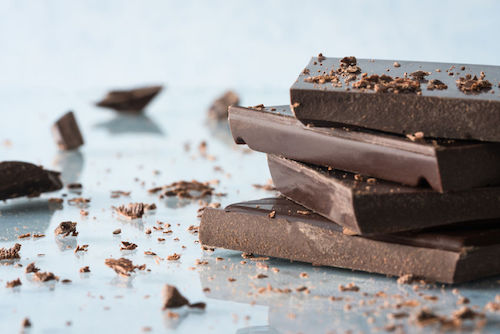Embracing the joys of Summer Fridays, BBQ Saturdays, and Sunday Funday boozy brunches are undeniably tempting when the weather is warm and inviting. Maintaining a nutritious life throughout these festivities is another story—albeit possible without sacrificing your well-being. Here are a few simple yet effective strategies to help you stay healthy, energized and feeling good all summer long, allowing your wellness journey to thrive even during the dog days of summer. The best part? It’s easier than you might think.
How to Stay Healthy All Summer Long in 4 Easy Steps:
1. H2O & lemon: If you’re not already a good guzzler then now’s the time to start, starting with a refreshing morning ritual. For years I’ve had all of my clients start their day with a tall glass of water infused with a wedge of lemon.
There is a behavioral and mental component here: this simple practice gives you a sense of accomplishment (yes it can feel that good to simply throw back 8 to 16 oz of H2O before your morning meeting) and it helps to provide the essential benefits of hydration right from the start of the day.
The visual cue of the lemon floating in the water is a lil’ gentle reminder to make wholesome food choices throughout the day. A plain glass of water might not have the same effect. Also, lemon provides a bit of vitamin C, a known antioxidant, and adds a touch of flavor which is helpful for many people to drink up!
To take it a step further, consider using a 32 oz water bottle and filling it twice throughout the day. By doing so, you’ll not only ensure you’re on your way to proper hydration but also have a convenient way to track your water intake. Adding electrolytes to your water, can help maintain optimal bodily functions and support hydration.
2. Save your skin: Summertime wreaks havoc on your skin. Did you miss a spot with the sunscreen? Forget to reapply? Find yourself a little crispy from the wind blowing on you at the beach?
Moisturizing is essential. You should be exfoliating 2 to 3 times per week for normal skin. Scrub your bod down in the shower with a little Eucalyptus Body Wash and a loofah, then follow it up by moisturizing so that you’ll be restored, smoothed out and smell as yummy as you look.
Remember, your skin is not just about appearance—it plays an essential part in your overall health. By adopting a skincare routine that nourishes and protects your skin, you’re taking a proactive step towards maintaining your well-being throughout the summer season.
3. Fire it up: Try rotating in a meatless bbq to your summer routine. Charred and blackened meats create heterocyclic amines and polycyclic aromatic hydrocarbons, which increase your risk of certain kinds of cancers.
Barbecued veggies don’t create these damaging compounds and can be delish. I love me some Grill-friendly fruits and vegetables. You won’t miss the meat. Promise.
4. Tuck in: Haven’t thought about your shut eye in a while? Good sleep improves your mood, gives your body a chance to restore itself from stressors from your life, ups your energy and keeps you lean.
Before you hit the hay, follow these tips to improve your shut eye and make the most of your unconscious time.
Keep these four things in mind all summer long and you’ll be ready to take on fall as the healthiest, happiest version of you.
The 10 Most Filling VegetablesAsk Keri: When I fill most of my plate with veggies, I end up hungry right after I eat. Which are the most filling vegetables?
Keri says: I hear you. If you’re subsisting on mostly produce, it can be hard to stay satisfied. Let me share a few pieces of advice before we get to the most filling vegetables.
First, the great thing about eating tons of vegetables is you really can eat tons of vegetables. OK, I’m exaggerating, but you should get used to the fact that servings of veggies are always going to be larger than portion sizes for other food groups like meat, dairy, and grains, which all require some restraint. In other words, if you’re eating kale and you want more kale, just eat more kale and please don’t beat yourself up about it.
RELATED: A Quick Primer on Healthy Portion Sizes
Next, while vegetables should make up the bulk of your diet, you’re never going to feel satisfied if you’re not getting protein at every meal. Shift your habits towards filling most of the plate with greens, but don’t forget to fill the space left with high-quality protein—whether that means grass-fed steak, wild salmon, or beans and grains—and good fats.
RELATED: The Essential Guide to Plant-Based Protein
All that being said, some veggies—namely those that contain lots of fiber and water—do fill you up more than others. Here’s my go-to list of filling veggies.
The 10 Most Filling Vegetables
1. Artichokes
Artichokes are one of my favorite foods of all time (they’re the starring snack in my O2 Diet cleanse!). They’re water-rich and just one artichoke contains more than 10 grams of fiber. Bonus: Not only will they fill you up, they’ll also protect your skin.
2. Broccoli
In the nutrition department, broccoli shines. It is super fibrous and more than 90% water, so you can expect to feel satisfied after a few florets (OK, maybe more than a few). It also contains compounds that reduce heart disease and cancer risk and prevent inflammation, so it makes sense to give it regular rotation in your diet.
RELATED: 7 Delicious Anti-Inflammatory Foods to Eat Daily
3. Peas
Peas are high in both fiber and water and provide a surprising amount of protein (8 grams per cup) compared to other produce., This is why you’ve likely seen packaged products and powders made with extracted pea protein. They’re also a great source of vitamins A, K and C, as well as thiamine, folate and manganese. What a powerhouse!
4. Carrots
Carrots are rich in fiber and come with a sweet, satisfying crunch if you snack on them raw. Plus, they’re perfect for dipping into a protein-rich dip like hummus or Greek yogurt. The beta carotene in carrots helps boost eye health and its antioxidants help protect your heart. They’re also a great source of potassium and vitamin K.
5. Sweet Potatoes
Sweet potatoes are starchy and fiber-rich, as long as you keep the skin on (since that’s where a lot of the nutrient magic is stored). Plus, they’re filled with powerful antioxidants called carotenoids, which come with all kinds of health benefits.
6. Beets
The rich pink hue in beets comes from a group of health-promoting antioxidants called betalains. Rich in vitamins and minerals, beets also contain a high concentration of dietary nitrates. These compounds convert to nitric oxide in the body, which dilates blood vessels. This helps to lower your blood pressure, amp up your oxygen intake, and consequently reduce your risk of heart attack and stroke.
7. Brussels sprouts
These cruciferous veggies are low in calories but high in the good stuff—fiber, vitamins and minerals. They’re also extra rich in vitamin K, which is crucial for bone health and blood clotting. Read up on the health benefits of vitamin K here.
8. Cauliflower
Cauliflower, another yummy veggie in the cruciferous family, is high in fiber and water content helping keep you full and regular. It also contains bioactive compounds that reduce inflammation and lower your risk of chronic diseases, such as diabetes, cancer and heart disease. Cauliflower’s health benefits don’t stop there. It’s also rich in sulforaphane, a potent antioxidant linked to a lower risk of developing certain cancers, including breast, melanoma, prostate and colon. Cauliflower is also a great source of vitamin K, with all the benefits mentioned above.
RELATED: The Health Benefits of Cauliflower
9. Asparagus
Asparagus is high in glutathione, an antioxidant that plays a major role in protecting your body against damaging free radicals and boosting your immune system. It’s also a great source of folate and vitamins like A, C and K. Asparagus contains compounds that act like probiotics, helping with digestion and preventing bloat. To get all the health benefits of asparagus, try eating it raw or drizzle it with a little avocado oil to add some healthy fats.
10. Celery
Celery is low in calories (just 15 for 2 medium stalks) yet high in vitamins K and A, folate and potassium. It also contains loads of phytonutrients with antioxidant and anti-inflammatory powers, like luteolin and quercetin. Just beware of all the miracle claims circling around celery on social media. It’s a filling and healthy addition to your diet, but it may not live up to all its hype.
Bottom line: Adding any of these veggies to your plate will fill you up while boosting your health quotient.
(Image: Shutterstock)
5 Ways to Eat More Vegetables That Don’t Involve SaladsLook, we eat salad constantly, like it’s going out of style, but if you’re trying to eat more vegetables at every meal, you’ve just got to have other options.
Healthy people can’t live on salad alone, right?
Plus, some people don’t love the crunch of raw kale or spinach (your kids, maybe?) and would prefer their veggies a little more dressed up (or even mysteriously disguised!).
For all of those instances, there are lots of creative ways to work vegetables into your daily meal plan—from breakfast to dessert.
5 Ways to Eat More Vegetables
- Use leftover veggies (from last night’s dinner or the ones you didn’t use that are about to rot in the fridge) to make a leftovers frittata. Pro Tip: Pour the egg-and-veggie mixture into individual muffin tin portions and bake for an easy grab-and-go breakfast option.
- Eat veggies as a snack by roasting artichoke hearts. Making them takes 15 minutes max, and they can also serve as a great side dish for any kind of healthy protein.
- Add a cup of spinach to a post workout chocolate protein smoothie. You can use fresh (if you’ve got some leftover from all of those, ahem, salads) or frozen, when spinach isn’t in season.
- Sneak veggies into a classic comfort food. It’s easier than you think to just throw them into things you already make. For instance, try this quesadilla made with cheddar cheese and beans but also corn, onion, and nutrient-dense broccoli rabe. Another simple tactic: Chop a green like spinach or kale super fine and throw it into your tomato sauce on pasta night, and no one will even notice.
- Add veggies to your desserts. Bet you didn’t know you could add sweet potatoes, beets, zucchini, and cauliflower to delicious baked goods. Seriously, from cookies to cupcakes, there are simple ways to serve every dessert with a mega-dose of antioxidants.
Want to take your baking up a nutritional notch? Here’s a super simple healthy baking hack: Add vegetables!
Baking is a creative and meditative activity that truly nourishes the soul—and there’s no reason why it shouldn’t nourish your body, too.
RELATED: Easy, Delicious Recipes for Gluten-Free Baking
Maybe you’ve already replaced white flour with nutrient-dense flours, like those made from almonds or coconuts. Maybe you’ve already switched to healthier sweeteners like coconut sugar, dates, or raw honey.
Well, now that you’ve taken the unhealthy stuff out, it’s time to add nutritious ingredients in.
Here are some of my favorite ways to add healthy and delicious vegetables into your creations. Don’t worry—you don’t have to sacrifice a bit of sweetness.
Healthy Baking Hack: Add These Veggies
Beets: A Baking Boss
Those roasted beets in your fridge (or even the canned ones in your pantry!) are pure magic when puréed in a food processor and blended with dark chocolate.
Consider them nature’s red velvet, versatile in cakes, cupcakes, bars and even pancakes. Beets lend moisture—which means that you can dial down the oil or butter—beautiful color, and natural sweetness. They’re also loaded with vitamin C, antioxidants, fiber, and other minerals and nutrients.
Sweet Potato: Pastry Powerhouse
I love keeping baked sweet potatoes in the fridge to have for breakfast or to add to my salads. But when the baking mood strikes, I take one out, mash it up, and get happy.
Loaded with vitamins A, C, and plenty more (fiber, too!), sweet potatoes can be incorporated into desserts incognito, as they are in these chocolate cupcakes. They can also take center stage, as they do in these sweet potato pie cookies.
RELATED: Are Sweet Potatoes Really Healthier than White Potatoes?
Zucchini: Beyond the Zoodle
Zucchini is delicious roasted, baked, and noodled. But grate it and mix it into brownie batter, and you’ve got a real winner.
Just add about 1–1 ½ cups of grated zucchini to your favorite brownie recipe (making sure to squeeze out all of the excess liquid, first). They will probably be on the fudgier side and will still taste amazing, plus you’ll get added essential nutrients and antioxidants.
Of course, you can also make a delicious zucchini bread. Here is a favorite (which also uses sweet potato!).
Cauliflower: Cruciferous Chameleon
Consider cauliflower the tofu of the easy-to-bake-with veggies. It really takes on the flavors that it’s exposed to.
It also works especially well as a substitute for sour cream or cream cheese in recipes that call for those ingredients (like coffee cakes).
Just add some fresh squeezed lemon juice to puréed, steamed cauliflower—around 3 tablespoons per cup of purée along with a drizzle of coconut oil or milk—and you’ll have power cream instead of sour cream.
Happy (veggie) baking!
 Solana Nolfo is a holistic health coach and wellness advocate who is Nutritious Life Certified and also certified by The Institute for Integrative Nutrition. She is an active baker who enjoys developing recipes for empowered baked goods that feature nutrient-rich, real food ingredients. Solana also has over 15 years of expertise in marketing and communications. She received her BA from Barnard College, where she was an active student leader and graduated with honors. She credits her San Francisco-based mom with encouraging her to live a Nutritious Life; she used to be embarrassed of her school lunches (seaweed, always!) but is now proud of her trendsetting roots. Solana lives in New York City with her husband and cookie-loving twin sons and bakes something with bananas almost every weekend. For baking inspiration, follow her on Instagram at @solanastar.
Solana Nolfo is a holistic health coach and wellness advocate who is Nutritious Life Certified and also certified by The Institute for Integrative Nutrition. She is an active baker who enjoys developing recipes for empowered baked goods that feature nutrient-rich, real food ingredients. Solana also has over 15 years of expertise in marketing and communications. She received her BA from Barnard College, where she was an active student leader and graduated with honors. She credits her San Francisco-based mom with encouraging her to live a Nutritious Life; she used to be embarrassed of her school lunches (seaweed, always!) but is now proud of her trendsetting roots. Solana lives in New York City with her husband and cookie-loving twin sons and bakes something with bananas almost every weekend. For baking inspiration, follow her on Instagram at @solanastar.
Sure, squash is delish. But after a long, cold winter, you start to crave the bright, fresh flavors of spring. Enter these spring vegetable recipes, which will make enjoying those flavors easy.
Think crunchy asparagus with grains, salads filled with artichokes, radishes, and peas, and creative ways to use that first crop of leafy greens.
RELATED: Easy Salad Dressing Recipes to Dress Up Your Veggies
These dishes of course taste the best if you eat them while soaking up a little sunshine…or breathing in the scent of blooming tulips.
Spring Vegetable Recipes
Perfect Spring Salad
If you’re looking for a dish that really celebrates spring’s veggie bounty, this is it. Peas, radishes, and artichokes all pop up fresh at the start of the season and are filled with vitamins and minerals. Greek yogurt and hemp seeds add protein and a whole lot of other goodness.
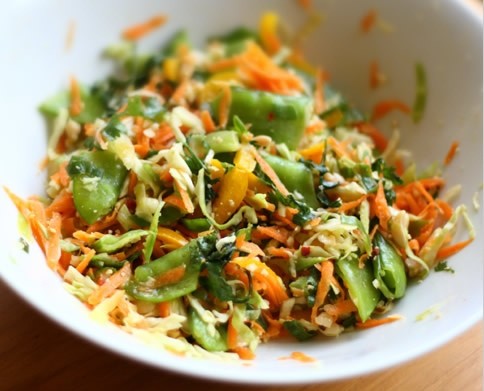
Snow Pea and Napa Slaw
Fresh spring carrots, green onions, and snow peas are paired with nutrient-powerhouse Napa cabbage: The cousin to kale delivers antioxidants like vitamin C, fiber, and vitamin K. Serve the crunchy, zesty slaw alongside burgers, fish, or almost any other protein.
Asparagus Farro Salad
Farro is an ancient grain that’s an excellent source of protein, vitamins, and minerals and is also higher in fiber than brown rice or quinoa. Its dense, chewy texture pairs perfectly with crunchy, fresh asparagus.
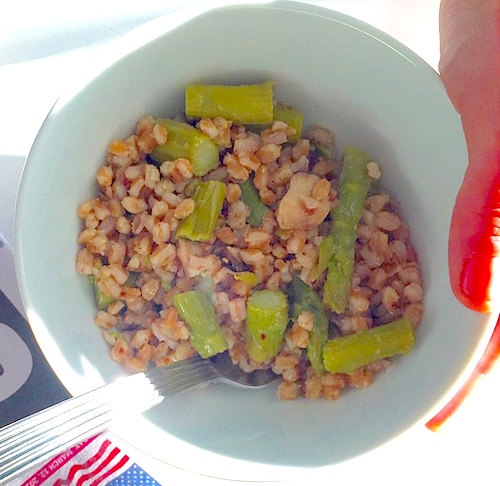
Healthy Creamed Spinach
Leeks deliver a mild onion flavor and strong health benefits. They contain carotenoids, calcium, iron, and vitamins A and K. Paired with nutrient-dense spinach and goat cheese for protein, this dish is creamy, delicious goodness.
How to Make Small Nutritious Shifts Towards Better HealthSometimes, a giant leap towards a healthier, happier life is necessary. Other times, small shifts can get you to the same place with a lower risk of failure.
To celebrate National Nutrition Month, we’re focusing on helping you make those small changes. Call them Nutritious Shifts. They’re tweaks to your diet, exercise, and sleep habits that are easy to act on right now—that will have a major impact on your overall health.
We’re rolling out two each week during March to coincide with the eight pillars of a Nutritious Life (so keep checking back for additions!).
Join us in making each (easy!) shift throughout the month. Share your progress on Instagram or Facebook using the hashtags #nutritiousshifts and #livinganutritiouslife. At the end of March, we’ll feature our favorite posts on the Nutritious Life blog (so you’ve got a shot at wellness fame, too!).
Nutritious Shift 1: Eat Vegetables for Breakfast
Getting veggies in at every meal is a great way to Eat Empowered, but breakfast can be tough if you’re a yogurt or oatmeal kind of gal. Get creative and try including a veggie in the first meal of the day this week. Throw greens like kale or spinach into a smoothie, add peppers and onions to your scrambled eggs, or add tomato to your avocado toast. You can even make a salad and throw an egg on top.
Try These Recipes:
Antioxidant Smoothie
There’s spinach mixed into all of the sweetness.
Leftovers Frittata
You can throw any leftover roasted or sauteed veggies in here, or use up the last of a bag of greens.
Morning Glory Muffins
Yummy grain-free muffins made with carrot and pumpkin.
Nutritious Shift 2: Go Local
We’re not suggesting you give up all of your grocery plans and start foraging for mushrooms in the local park. Just choose one tiny thing you can do this week to support the local food economy that you might otherwise have skipped. Here are a few easy ideas:
- Replace one grocery store trip with a quick stop at a farmer’s market, local farm stand, small bakery, or neighborhood butcher shop.
- Sign up for a local CSA (farm share) for the upcoming spring/summer seasons.
- At your grocery store, look for a fruit or veggie grown in your state and throw it in your basket even if it wasn’t what you’d normally buy.
- If you live in New York, click the “Local” tab on FreshDirect and get some local produce delivered right to your door. Now, how easy is that?!
Nutritious Shift 3: Make a Workout Date
One foolproof way to make sure you Sweat Often? Find a workout BFF. Exercising with a partner has a few benefits: you’re less likely to bail if someone expects you to show up, and you may push yourself harder to impress a friend. Most importantly, it’s more fun—and a fitness routine is only sustainable if you enjoy it.
You may have heard of all of this before, but we want you to commit to trying one of these specific #NutritiousShifts to make your fitness routine social this month:
- Instead of meeting a friend or coworker for happy hour, schedule a yoga or spin class.
- Tap a fitness-loving friend to be your new workout buddy and make a schedule for the next month that details when you’re going to meet up to hit the gym.
- If you’re in a relationship, go for a run with your partner on Sunday instead of (or better yet…before!) going to brunch.
- Try out a run club or social fitness group like Electric Flight Crew or the November Project (both of which have chapters in multiple cities).
Nutritious Shift 4: Drink More Water
It sounds simple, but many people are walking around dehydrated, which can sap energy, slow metabolism, and lead to overeating. Drinking 64 ounces per day is a good goal. Here are some #NutritiousShifts that will get you to Drink Up, now:
- Commit to taking a water bottle with you everywhere you go for a week. If you have it with you, you’ll reach for it more often.
- Before each meal and snack, fill a tall glass of water and make sure you finish it along with your food.
- Upgrade your water (making it irresistible!) by adding fruit or spices.

Nutritious Shift 5: Practice a Random Act of Kindness
Expressing love has many health benefits—and we’re not just talking about in bed (although sex is sooo good for you, FYI). Research has shown hugging may lower blood pressure and boost levels of relaxation-related hormone oxytocin, that expressing altruism and spending money on others can make you happier, and that regularly supporting others is linked to higher self-esteem and less depression. (Oh, not to mention it’s just the right thing to do!) Ready to Love More? Choose one of these #NutritiousShifts (or your own!) to practice a random act of kindness this week:
- If you’re in a relationship, leave a love note on your partner’s pillow for no reason.
- Buy coffee for the stranger behind you in line at Starbucks.
- Buy a treat for a coworker and have it waiting on his or her desk.
- Mail a simple “Thinking of you!” postcard to a friend who’s far away.
- Call or text a family member you haven’t talked to in a long time just to say hello.
Nutritious Shift 6: Nurture Your Skin
Your skin is a really, really big organ that is often ignored in terms of how it relates to your overall wellness. The truth is it needs just as much care as your heart needs cardio. Add a few minutes to your normal skincare routine to do a little nurturing this week. Choose one of these #NutritiousShifts (or ask it what it wants, babe):
- Take a long bubble bath instead of a shower.
- Do an at-home mask or body scrub to slough off dead skin and impurities.
- Treat yourself to a facial or a face massage.
- Toss one beauty product made with one of these two top toxic ingredients and replace it with a clean, natural alternative.
Nutritious Shift 7: Eat Stress-Reducing Foods
Stress is simply, well, evil. It promotes weight gain and inflammation and is pretty impossible to avoid in modern life.
There are many little things you can do, however, to keep your stress levels in check. (Two-minute meditation, anyone?)
Start with your plate, this month, by adding one of these stress-reducing foods to your diet. Add one—like cashews or grass-fed beef—to a dish, snap a photo, and share how you incorporated stress-busting foods into a meal by using the hashtag #NutritiousShifts.
We should mention dark chocolate is on the list. You’re welcome.
Nutritious Shift 8: Eat Foods That Help You Sleep
Certain foods can help you de-stress; others can help you sleep. (Some do both!)
This is important because not getting enough sleep can lead to stress, overeating, and weight gain.
Stocking up on snooze-inducing essential oils is a great tactic, but first, start by adding these foods that help you sleep to your diet this month. Add one—like almonds or asparagus—to a dish, snap a photo, and share how you incorporated sleep-boosting foods into a meal by using the hashtag #NutritiousShifts.
Bonus points for creating a meal that is filled with foods that help you both de-stress and get to snoozing.
Is the Spiralizer the Healthy Gadget Your Kitchen Needs?Nobody has ever accused me of being a tech genius, but I am a great appreciator of modern gizmos. When nouveau gadgets find their way into my kitchen, I am a happy cook, nutritionist, and mom. Which is why I’m still taking about the spiralizer.
I put it to use the day I got it and the next night…and the following three nights. When something’s this good, I share.
If you haven’t heard about it yet (not on Instagram much?), the spiralizer is an uber cool tool that turns your favorite veggies into pasta like julienned works of art. Even if you failed finger painting in kindergarten, you’ll be a master at food styling with a spiralizer in your hands.
RELATED: 5 Expert Instagram Tips for Gorgeous Healthy Food Photos
Why Use a Spiralizer?
Regular pasta is flat out nutrient poor. There aren’t many health benefits lurking in the processed flour, eggs, and water that make it up. Still, it’s delicious and eliminating it seems extreme.
Enter the un-pasta of your dreams. You can spiralize zucchini, carrots, sweet potatoes, cucumbers, and jicama (or even apples, beets, or whatever your heart desires) to make nutrient-dense, yummy pasta-ish creations.
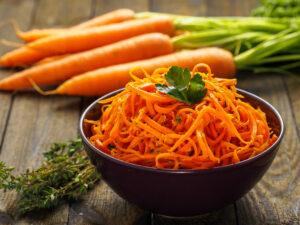
When you turn your veggies into spaghetti-shaped eats, you get to keep all of the amazing nutrients, like vitamins, minerals, fiber, and antioxidants. You can slurp ‘em down raw, pan sauteed, or steamed, and dress ‘em up with everything from pesto or marinara to Pad Thai or curry sauce. The recipes and ideas are only limited by your imagination (and we all have a little Jackson Pollock in us, right?).
RELATED: 7 Easy, Creative Smoothie Recipes to Shake Up Your Routine
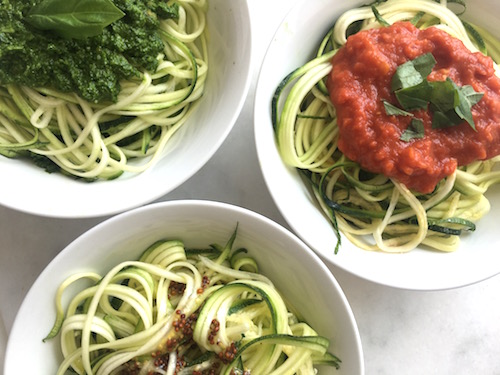
How to Choose a Spiralizer
I did the homework for you. If you are a New Yorker, like me, go for the spiralizer that fits neatly in your utensil drawer, stays sharp forever, and washes easily in the dishwasher.
If you have counter space and are looking for more varied shapes, try the countertop version, which offers changeable blades that will unleash your inner food-artist.
I love this gadget as an omnivore, but if you are looking for a gift for your gluten-free, Paleo, or raw foodie friend, it’s a perfect tool, because the un-noodle is a perfect ingredient for any type of eater. Happy spiralizing!

